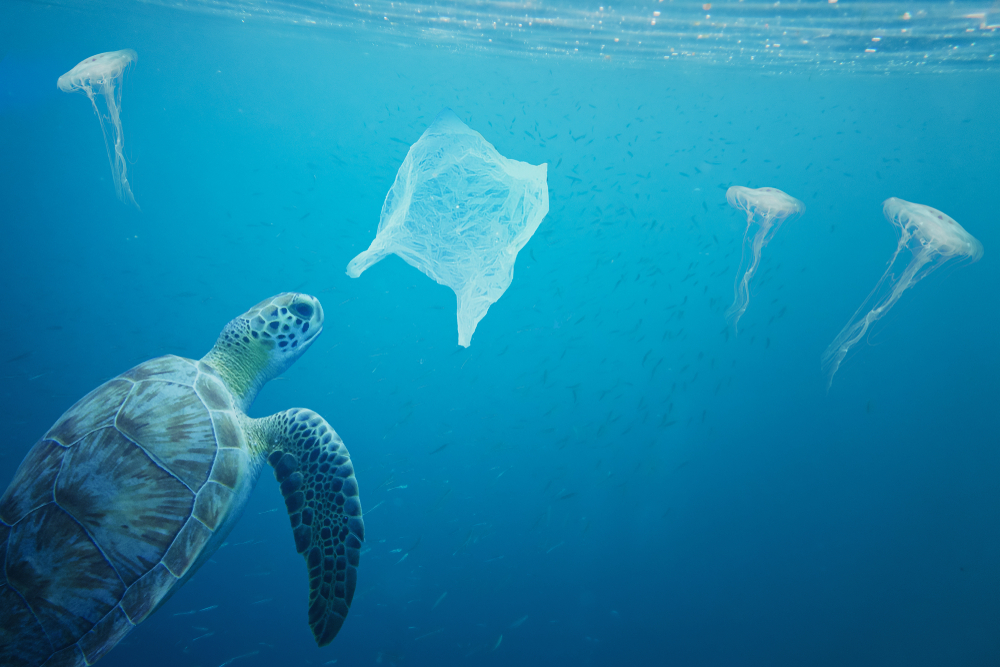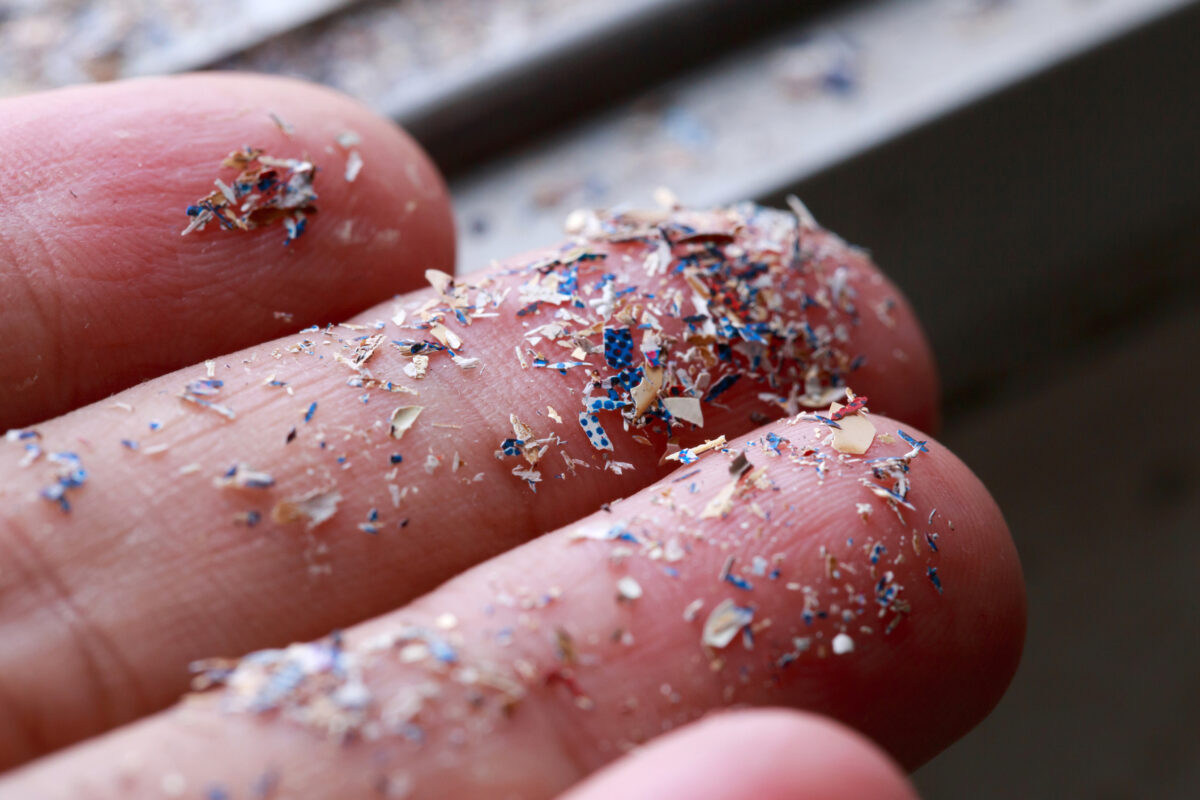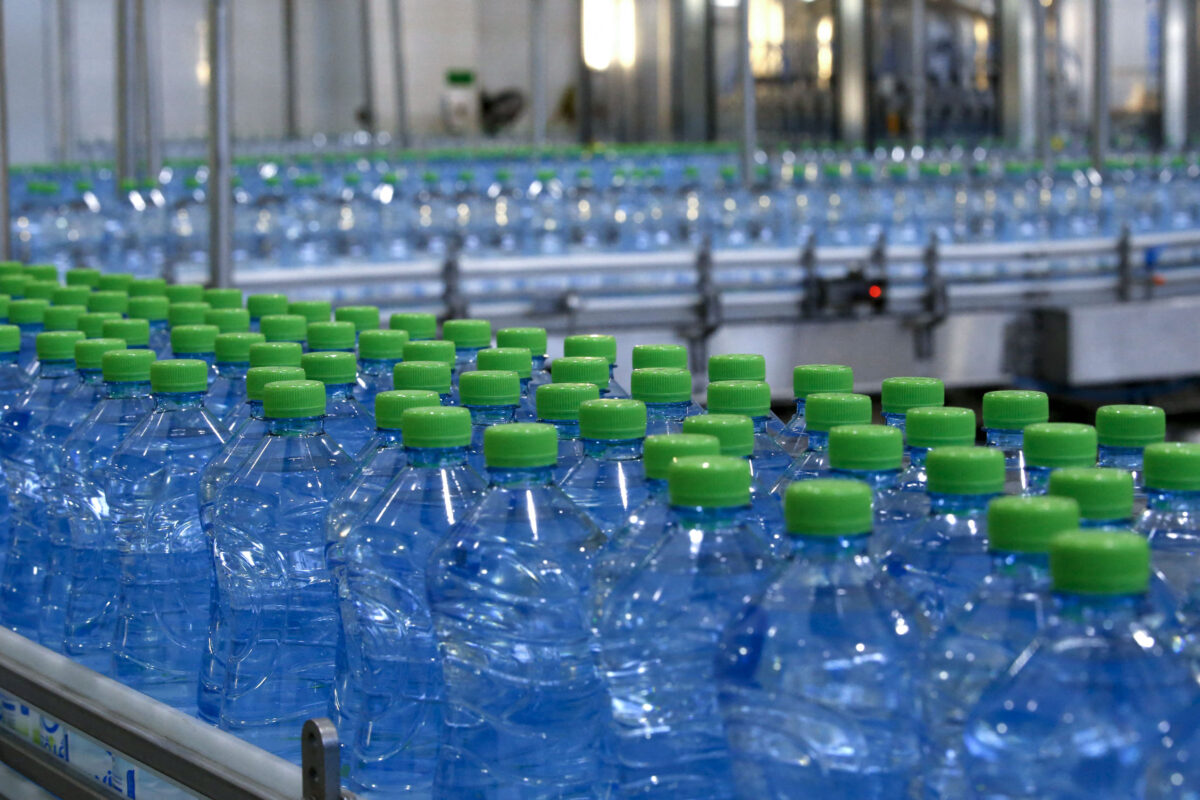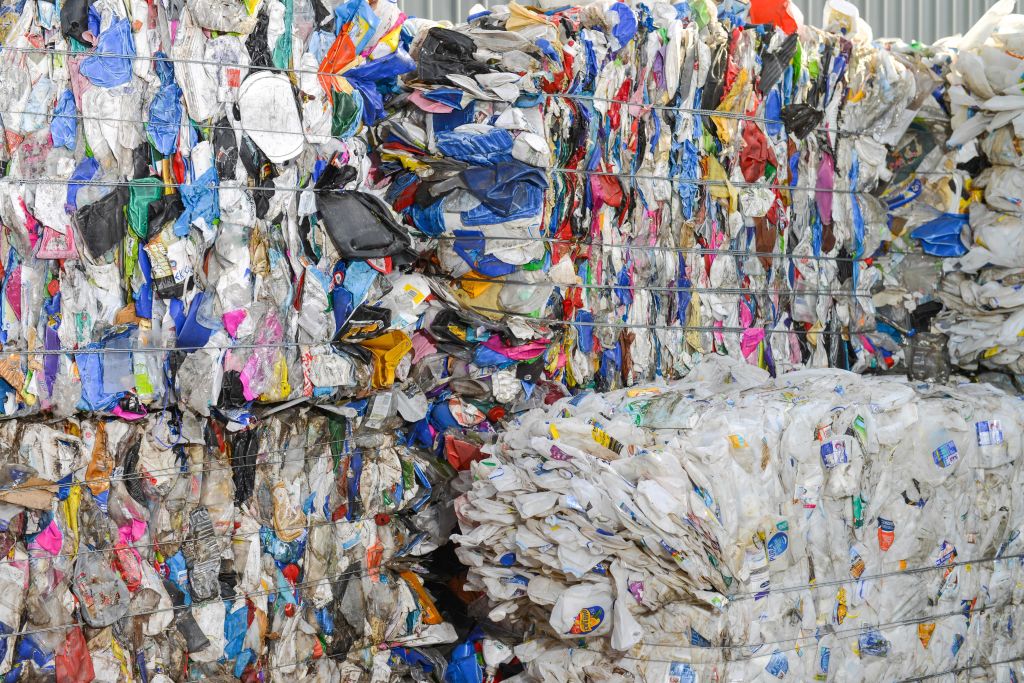Much as none of us like any of this. the actual threat is far less than obvious. The plastic itself is chemically neutral with any soluable parts taken away It is literally like sand. We handle sand biologically by mostly passing it through.
Any real biological problem are larger chunks swallowed and then stuck in the body. Most critters do test what they eat. Just saying.
So yes it is unsightly and controling dumping in the ocean needs to become global. After all, the great Pacific garbage patch likely came from the Yangtze. We use landfills for everything.
And by the by, our landfills do slowly degrade it all over even centuries. Not perfect, but it still works.
‘We’re All Exposed’: How Microplastic Is Affecting Our Health and Changing the World
Mounting microplastic pollution is turning Earth into a giant chemistry experiment, expert says
Microplastics are being found everywhere, including in newborn children. (Marina Demidiuk/Shutterstock)
By Petr Svab
March 2, 2023Updated: March 5, 2023
Our world is getting polluted with plastics on a planetary scale. We can’t see much of it, but we’re starting to feel it.
And it’s getting worse.
The plastic bottle tossed by the roadside and the endless trash heaps in third-world countries are just the beginning. As the trash ages, it breaks down into increasingly smaller pieces, until it can’t be seen with the naked eye anymore. At that point, however, the problems have barely begun.
These tiny pieces of plastic, called microplastics, have permeated everything, scientists have found in recent years. They can be as large as 5 millimeters and as small as 100 microns—about as thin as a human hair—or even smaller, at which point they’re sometimes referred to as nanoplastics.
Microplastics have been found in the most remote corners of the world.

Microplastics have been detected in rice, an Australian research paper has found. (Joker/Alexander Stein/Getty Images)
“It doesn’t matter where we look. We find microplastics. In the environment, it could be the bottom of the Mariana Trench, it could be the top of Mount Everest, and everywhere in between,” said Sherri “Sam” Mason, an associate professor at Penn State–Behrend who is an expert on microplastic pollution.
“As a consequence of it being everywhere in the environment, it’s everywhere within living organisms.”
Microplastics have been found in the animals we eat, in the water we drink, and in the air we breathe. It’s in our blood and in our organ tissues, even the deepest tissue of our lungs.
“We have a tendency to have this illusion that our skin separates us from the environment, but it is an illusion,” Mason said.
Children, nowadays, are being born with microplastic already in their bodies.
Plastic particles have been found on both sides of the placental boundary, meaning it’s seeping from the mother’s body into the unborn child.
The repercussions of such pollution are largely unknown. Getting definitive answers has proven immensely difficult. What research has been done, however, indicates the effects are negative.
“With regard to the human health impacts of it, perhaps unsurprisingly, none of them are good,” Mason said.
\

Tainted microplastics can continue to make their way up the food chain, inadvertently exposing humans. (Shutterstock)
There are many ways to address the issue, but it isn’t clear whether a definitive solution is practically achievable. The pollution can be greatly reduced by ditching single-use plastic packaging and reforming the fashion industry. However, that still leaves a massive amount of plastic entering the environment, not to mention the substantial pollution there already is.
So far, research has largely focused on gauging the scale of the issue. It wasn’t until 2018, for example, that a paper was published at least somewhat accurately estimating how much plastic is floating in the Great Pacific Garbage Patch—the largest of several massive accumulations of plastic trash in the oceans. Even then, the estimate ranged from 45,000 to 129,000 tonnes.
Worldwide, some 7 billion metric tons of plastic trash are estimated to be in the environment, in landfills, oceans, and dumps as well as just strewn around. That amount is expected to grow to 12 billion by 2050.
Research already has found that small pieces of plastic are a problem for fish and birds who mistake them for food. The plastic sits in their stomachs, making them feel full even though they may be malnourished. That, in turn, affects their growth and ability to procreate.
What the more microscopic plastic particles may do to the bodies of animals—or humans for that matter—is mostly unknown and may to a large degree remain so.
One of the problems is isolating the effect of plastics from all the other factors messing with human health.
“Some of the impacts are not acute,” said Marcus Eriksen, co-founder and researcher at 5 Gyres, an environmental group that aims to reduce plastic pollution. “If you have a liver packed full of nanoplastics or it’s in your placenta, how do you correlate that to harm?”
He cautioned that “in many cases, we’re not going to get clear-cut evidence because of the complexity of trying to establish a cause-effect relationship.”
One of the most established ways to discover the health effects of a substance is through placebo-controlled clinical trials—preferably long-term. But that’s particularly difficult in this case. Microplastics are so pervasive there may be nobody left to form a control group.
“We’re all exposed. Who’s not?” Eriksen said.
Health impacts can be studied to some extent through animal experiments. It’s also possible to use artificial human tissue grown from stem cells.
“It’s expensive and time-consuming,” he said.
It’s easier to look at the effects of chemicals added to the plastics, such as flame retardants in solid plastics or water repellents in fabrics.
“We know more about the chemicals than we do the plastics, the material itself,” Mason stated, adding that “there are more than 10,000 chemicals that are used in the manufacturing of plastics, and many of these we already know have human health impacts.”

Plastics are found all around the world, including on beaches. (iStock/Getty Images Plus)
Moreover, microplastic can act as a “temporary sponge,” absorbing chemicals from the environment and releasing them later inside an organism, said Lisa Erdle, director of Science & Innovation at 5 Gyres.
Some chemicals that are added to plastics can cause cancer or harm fertility, according to Mason. As for the plastics themselves, some studies suggest they may worsen Alzheimer’s disease and disrupt cell function, Mason and Erdle say.
“There’s starting to be a connection being made between this material and certain neurological diseases,” Mason said.
Another factor complicating the research is the immense variability of plastics.
At their core, plastics are made of large hydrocarbon molecules that can be assembled into a virtually infinite number of shapes and variations, giving them different physical and chemical properties. The complexity of discerning their health effects one by one and in various combinations is then also nearly infinite.
Moreover, new kinds of plastics are developed all the time. Current science has no way to determine in advance all the long-term health effects of each type of plastic after it breaks down into microplastics and spreads throughout the environment.
“We have turned our planet into a giant chemistry experiment,” Mason said.

A researcher studying microplastics examines a sediment sample collected off the coast of Japan, on Oct. 14, 2021. (Image enhanced by The Epoch Times) (CHARLY TRIBALLEAU/AFP via Getty Images)
“We’re doing an experiment on ourselves and our children and our children’s children.”
She pointed to hubris as the cause of our throwing caution in the wind, as “we think that we’re smarter than we are.”
“Maybe it will take 10 years, maybe it will take 50 years, but it’s going to come back to bite us,” she said.
Eriksen acknowledged that the “jury is still out” on the long-term effects of plastic pollution. But he argued it’s time to pause and rethink how we do things.
“The abundance of novel chemicals in society, in our environment, and the lack of understanding of how they affect these living systems and their interaction effects, it makes me want to employ the precautionary principle,” he said, though he acknowledged data on the issue is still lacking.
“Does the research show that the impacts should cause public fear? Not quite there yet. Because the research, it takes a long time,” he said.
“But my gut says, ‘Do no harm.’ I’m always for prevention of a problem if you see it happening. Why wait until the problem is much bigger than it already is to then say, ‘Oh, it’s a big problem’?”
Solutions
While the plastic pollution problem may be impossible to solve completely, there are ways to mitigate it. About half of all plastic pollution is estimated to come from single-use packaging. Much of it has non-plastic alternatives.
There are also companies working on alternative materials that naturally break down.
“We’re seeing a lot of investment, [venture capital] money, going to some of the new biomaterial companies. It’s pretty inspiring,” Eriksen said.
A material called PHA, for example, is made of a chemical that microbes use in their cellular wall to store energy.
“We can extract that and make what looks and feels like plastic. It has a long shelf life, it can be translucent, it can be made in different colors, and it can be made into rigid plastics or flexible plastics. And in the environment, it begins to break down very quickly,” he said.

Concept image of a wave of plastic ocean pollution. (Alistair Berg/Getty Images)
There’s also a company that’s developing a material that works as plastic cling wrap, but is made of seaweed and breaks down after discarding.
Those materials are still more expensive than plastics though.
“They have the challenges that any startup might have,” Eriksen said, hoping that as the production scales up, the price will drop.
Industries that use plastics for single-use packaging may be willing to pay a bit more in exchange for the positive PR that a more nature-friendly material could bring, he suggested, referring to his conversations with corporate executives in the industry.
“They’ll shift if the science is good, the packaging works for them, and gives them a good story to tell.”
Recycling could work in theory, but in practice remains inefficient—new plastic ends up being cheaper.
“You have to get it back from the consumer, then you have to repolymerize it, repelletize it, and distribute that to your costumers,” Eriksen said. “Those are real expenses and that’s not as efficient as the system of extracting raw materials and making virgin resin.”
Producers that are willing to use alternative or recycled materials are those in the high-end market able to absorb the costs, he said.
The only way to give recycling “an economic chance,” he said, would be to force producers to buy recycled material by government fiat.
Another problem is that a lot of plastics can’t be recycled, such as the thin plastic film used for packaging, which is expected to greatly increase in production in the coming years.
Even materials that can be recycled may end up in landfills if the manufacturer combines them with unrecyclable substances in the same product.
“If you take plastics and you line it with metal or paper or use adhesives or have different kinds of polymers in one product, it makes recycling mechanically very difficult, in some cases economically impossible—not worth it,” Eriksen said.
“You’ve got to set up for success. And that’s been an endless fight for decades.”
One of the supposed success stories of recycling is turning plastic PET bottles into synthetic fleece fabric.
In Eriksen’s view, however, that’s a “marketing scheme” rather than “a long-term solution.”
Synthetic textile, and fleece, in particular, stands as the No. 2 plastic pollutant behind single-use packaging. Synthetic threads are the most pervasive microplastic pollutant in human lungs, according to Erdle, who specializes in research in this area.
The fibers are shed directly from synthetic fabrics such as clothing, carpets, and upholstery. They also shed into wastewater when the fabric is washed.
“A single load of laundry can release up to eight million fibers,” Erdle said.

Plastic bottles of mineral water are seen on an assembly line in the Al-Junaidi mineral water factory in the West Bank city of Hebron, on February 5, 2020. (Hazem Bader/AFP via Getty Images)
Wastewater treatment plants are able to filter out the threads, but some end up in the sludge called “biosolids,” which is then used as a fertilizer. The fibers are thus dumped into soil, where they are then picked up by wind or surface water and can travel large distances in air currents. Just like other plastics, they break down into smaller pieces over time.
“We don’t really know how long they’ll last in the environment just because all the studies to date that have tested them show little to no degradation,” Erdle said.
A partial solution is installing filters in washing machines that can capture most of the escaping lint.
It would also help to use less synthetic fabric, or at least switch to ones that shed less.
“There are lots of brands that are working on developing textiles that shed fewer microfibers, or if they do shed fibers, they are less toxic, less persistent, and are ultimately causing less harm,” Erdle said.
A major remedy would be to step back from the current “fast fashion” culture that produces a never-ending stream of fleeting trends, followed by an avalanche of low-quality garments destined to be discarded.
“One movie star wears a hat and suddenly, there are a gazillion low-quality hats on the market and people buy them. And in a few months, they’re not in fashion anymore,” Eriksen said, noting that trashed clothing has become a major source of pollution.
Many plastics can be easily burned, but that comes with its own suite of problems, Mason said.
“It’s very dirty.”
Burning plastics, particularly those that contain polyvinyl chloride, or PVC, releases large amounts of toxic chemicals, many of which are highly poisonous and carcinogenic. The fumes can be filtered, but some amount of the chemicals still get through.
“You can’t engineer these things to perfection. And many of these chemicals are known to have human health impacts at parts-per-trillion levels,” Mason said. “That’s like a single drop in an Olympic-size swimming pool.”
She sees only one true solution: use less plastic—substantially less.
Mason and Eriksen both support new government regulations that would ban single-use plastic packaging, for example.
The trouble is, much of the plastic packaging and much of the synthetic fabric is made overseas, in countries like Indonesia, Philippines, Thailand, Vietnam, and China. Even if they were forced to stop exporting such products to the United States, they still produce massive amounts of plastic pollution themselves.

Recycled plastic bottles at the Northern Adelaide Waste Management Authority’s recycling site in Edinburgh, near Adelaide, on April 17, 2019. (Brenton Edwards/AFP via Getty Images)
The United States mismanages less than 3 percent of its plastic waste, according to estimates made in a 2020 paper, while China mismanages 25 percent, Thailand and Indonesia over 60 percent, and the Philippines and India over 70 percent.
And that doesn’t even begin to address the billions of tons of plastic trash already in the environment that is steadily breaking down into microplastic trash.
Mason and Eriksen place some hope in the United Nations treaty on plastic pollution currently in the works. It was endorsed by 175 countries in a resolution last year (pdf).
But the resolution still emphasizes things such as recycling and ocean cleanups, neither of which amount to a solution, Eriksen said.
“The solution isn’t going to be more cleanups. We’re not going to recycle our way out of this problem. It’s going to take smart policy that applies to everyone and levels the playing field.”
The resolution, however, suggests that it won’t apply to everyone equally.
It acknowledges that “the effective implementation of some legal obligations under the instrument is dependent on the availability of capacity building and technical and adequate financial assistance” and provides for “flexibility that some provisions could allow countries discretion in implementation of their commitments taking into account the national circumstances.”
Beyond the treaty, Mason and Eriksen suggested the West should still do what it can on its own, but if that doesn’t make enough of a dent, there doesn’t appear to be a definitive solution, save a miracle.
“I do agree that currently it looks dark, that currently, at best, our present efforts are only working to slow the pace and not reverse the tide, which is what we need,” Mason said via email.
“I do certainly have my times of feeling like it is all hopeless, but cannot stay in that space because … well … I have a daughter and someday I may have grandchildren, and so I have to keep fighting. History does tell us that all is hopeless until it is not. At some point, and hopefully, at a point in which it is not too late, we will have no choice but to change.”

No comments:
Post a Comment